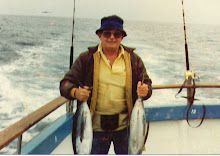Summer is officially gone in Nebraska and the fall season is in charge. I Drove to Kearney today in a driving rain with blustery cross winds that made me keep my speed well below the limit just to make sure I had control of the car. Everything is changing because the seasons are changing. I have been to Nebraska several times in the winter, but I have never been anywhere outside of California to watch the seasons change from one into another. It is a fascinating process. (Actually, I spent a year in Virginia in 1954-55 when I was in the army and I am sure I saw the season change, but a kid that age just can't appreciate something like the miracle of seasonal changes). The winds have stripped the leaves from many of the trees and covered the walkways. Soon the trees will be empty limbs sticking up in the colder air. And now is the time when the harvest is in full swing.
When my daughter and I have morning coffee at Bugbee's restaurant, I overhear snippets of conversations from hard working men who are preparing for another day's work at the grain elevators that offload the trucks filled with the harvested corn, soy beans and milo. Some of the truckers don't like the price they are being paid for their load while others don't like the wait behind several trucks in front of them. It's a new time of year, and it is reflected in the fields surrounding this area.
The green rolling countryside that so impressed me when I arrived in June is now brown and dead with just an occasional patch of green. Harvest time is here and the rolling vistas are still striking, but with a different sort of beauty. The endless fields of tall, green stalks of corn are now fields of short brown stalks no higher than 4 to 6 inches. The short stalks are left in the ground deliberately to act as snow traps during the winter, and they are absolutely essential for a successful winter wheat crop.
I had always thought that during the winter in Nebraska the fields just sat there waiting for spring so the plowing and planting could start all over again. Not so. Once corn is harvested and the remaining cane is chopped for cow feed, the short brown stalk remains. In late October and early November, the planting of the winter wheat takes place. Machines travel down the rows and punch seeds below the surface. These seeds are of a type that depend on being underground in cold weather in order to germinate and sprout in the earliest spring days. Those seeds sit there all winter taking advantage of what is called "dry farming". All that means is that there is no irrigation. The farmer depends on mother nature to supply the moisture in the form or rain or snow. Remember, snow is an insulator, that's why igloos and snow caves can keep people warm in the far, far north. Once snow falls, the left over stalks from the corn crop prevent the wind from blowing the snow away. The snow then keeps the ground temperature at seed level well above the air temperature. If all goes well, the seeds prosper during the cold of winter while humans go about their business dressed in fifty pounds of insulated coats, pants and boots.
When the cold of winter finally breaks in early spring, and when the the snow melts and the ground warms, the seeds sprout and farmers have another crop to harvest before they start to plow and plant for the new farming year.
The land is in use twelve months a year. Farmers need the land to keep producing income because theirs is a precarious financial existence. I spoke to a woman at the county offices one day who said she and her husband had been farming for the past twenty years, and finally this year, with its heavy spring rains and a reasonably kind summer, is the first year they will show a significant profit. Remember, Nebraska is one of those states with laws that prevent huge agri-corps from owning or operating farms. The state does all it can to promote the continued existence of family farmers. They are a dying breed in this country.
Thursday, October 18, 2007
Subscribe to:
Post Comments (Atom)




No comments:
Post a Comment